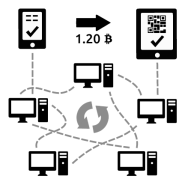
Since it was first developed in November 2022, ChatGPT has taken the academic world by storm. In this digital age, students can use artificial intelligence text generators like this one to write essays and assignments for them.
Sure enough it’s a useful tool as it can produce answers to questions on a variety of subjects or even when the subject doesn’t exist (break up songs in the style of Tailor Swift, anyone?).
But despite all the fun and potential, there’s no denying the risks which come along with using technology like this whilst studying at university – most notably, but not limited to academic plagiarism.
Bending the rules, or if we want to be more straightforward – cheating, has always existed in academia; from students paying others to complete their assignments for them, to the old fashioned sneaking in notes to exams,copying answers from friends, or copy and pasting information found online, and so forth.
It’s not a new phenomenon for any generation but Gen-Z has managed to take the challenge to a new level. The perfect recipe for a disaster if you’re a teacher or a lecturer – “fake writing” is becoming harder to spot and easier to do as technology develops.
The question is, does it really work? What are the risks of using software like ChatGPT and other AI-powered copywriting variations as a university student?
Does Using Artificial Intelligence Really Work?
Whether you’re a fan of it or not, there’s no denying that artificial Intelligence has begun taking over the world, with art and literature being the starting points for the rapidly growing technology. And as with any new trend, it makes sense that GenZ students are eagerly jumping on the craze.
It’s not just text to image creations that artificial intelligence programmes can produce, they are now able to generate written content from essays to assignments, to poems, to emails, to song lyrics and blog posts – the opportunities are endless.
One of the most notable AI writing software’s is ChatGPT which can help create content in a matter of seconds.
The chatbot was developed by Open AI, the same company which produced DALL-E, and uses natural language processing and machine learning algorithms to produce many forms of written word.
This free software can help replace spending hours on Google or (so ancient) at the library, as you can ask it questions and prompts in a human-like conversation.
Need a list of the best restaurants in your local area – you’ve got it. Last-minute assignment – ChatGPT can write an essay on a specific subject, just add the quotes.
Nervous about writing a cover letter for your university application or first job – you guessed it, it can do that.
In just the first five days of the software’s release it reached 1 million users and it doesn’t stop there.
Now a few months on, more and more people across the globe are tuning in to use the technological game changer, especially those in academia.
How To Use ChatGPT
If you’re wanting to try out ChatGPT for yourself, you simply need to sign up to make an account with your email and you can begin to type in prompts and gain detailed responses.
ChatGPT is available to use on both desktop and mobile with an easy navigation on both interfaces, so you can take your pick between either. We tried the large language model out on both a desktop and phone, both are easy to use and you can simply begin asking questions right away.
ChatGPT on desktop:
ChatGPT on mobile:
We asked ChatGPT several different prompts, including asking it to write an essay for us on artificial intelligence, it took only seconds for an answer to be generated.
We then typed in “explain academic plagiarism in simple terms” to which the AI programme produced a quick human-like response. You can even ask it to regenerate the response for a new answer.
Try it out for yourself and see what prompts you come up with, and what the responses are.
The AI software is currently free as it’s in research preview, meaning the creators are gaining users’ feedback and learning about the strengths and weaknesses. It’s likely in the future there will be costs to use ChatGPT, once it’s fully developed.
And considering its current popularity amongst the GenZ in higher education, will students get a discount?
What Are The Risks For Students?
Artificial intelligence opens up so many possibilities for the future of academia, but software like ChatGPT raises too many questions for the modern education system.
The whole purpose of writing assignments whilst at university is to learn how to write and develop skills which will not only take students through the degree, but into their adult life too.
However, let’s be realistic – students have been trying to find shortcuts around writing assignments since the beginning of time (or at least since the first university).
If the technology is available, and even more temptingly – completely free, it is almost naive to think it won’t be quickly put into practice.
Whilst the new artificial intelligence tool can be undoubtedly useful, it can be just as dangerous for the new generation of students who utilise this technology. If you’re going to use ChatGPT, you should be aware of the risks it poses.
Academic Plagiarism
Currently it may be hard to detect whether an assignment or essay is produced by an AI software like ChatGPT as it’s a completely new phenomenon, but it’s not impossible.
Research suggests that Turnitin will be able to catch students who have used AI within their assignments in the near future.
It’s not just plagiarism checkers which can help determine whether content is written using softwares like ChatGPT, universities themselves may be able to tell whether their students have used it to write essays or assignments.
We all have our own individual writing style, and your lecturers will know how you write. It is not impossible to imagine a future in which an entry in-person exam is introduced to simply familiarise lecturers with someone’s writing.
It might sound even wilder, but going back to a fully pen and paper exam season is also a possibility. Students who start churning out text-book level responses which are first class standard will more than likely get alarm bells ringing, especially if they don’t compare to previous submissions.
Academic plagiarism is a serious form of cheating and misconduct which can have huge consequences, including impacting your university place.
Universities in the USA have already banned the use of the software on their servers. Australian universities are returning to traditional methods of assessments of pen and paper due to students being caught using AI to write essays.
Lecturers within the UK have been urged to look at the way courses are assessed due to concerns over the AI tool. Could UK universities be next to ban the software?
Accuracy Of Content
If you’ve already used ChatGPT, you may have noticed that it’s not able to answer every single prompt that you type in.
This is because its data only goes up to 2021 so it currently only has knowledge of the world and events before this time, and it also is able to reject inappropriate requests.
Further limitations of ChatGPT is that it occasionally generates incorrect information as it’s not a search engine, which means it doesn’t search the internet for information and instead uses data to produce responses.
So, of course this can lead to a very inaccurate essay submission. Artificial intelligence softwares like ChatGPT cannot replace human creativity (just yet)!
Crisis To Learning
Aside from the risks involved with academic plagiarism from using artificial intelligence software’s, it can also lead to a learning and development crisis because students won’t build critical thinking and problem solving skills.
The skills and knowledge you gain from writing assignments and essays at university are not only a way to grade work and determine academic capability, they’re also knowledge and practice which will be carried into the working world following graduation.
At the end of the day, in the majority of cases students are the ones paying for their own education so as the saying goes, you’re only kidding yourself by using AI to write assignments.
Writing for exams and other assessments will remain a necessary skill, even though AI is here to stay.
We’re not suggesting the use of artificial intelligence softwares like ChatGPT is completely negative, as it’s all down to how they’re used, but it can be problematic.
Moderate Use
We all know the phrase everything’s good in moderation, and it applies in this instance too.
Using artificial intelligence softwares for research purposes can be great, but one must ask themselves what skills are gained from copying and pasting AI produced content for a degree that is meant to broaden the mind?
Is it really worth the money spent on tuition fees? Perhaps this method of cheating on academic writing may even fill us with guilt, or at least lead to awkward situations in the future?
We’d suggest if you’re going to use artificial intelligence, to use it wisely. It can be a great way to get the spark going, or save some time on repetitive writing, or help with brainstorming ideas on keywords or topics for the slightly less-creative minds out there.
We’d say use and learn from software’s such as ChatGPT, but make sure not to rely on them.
Does The Education System Need To Adapt?
Artificial intelligence may place many implications on global education systems, but it can undeniably be a useful tool which can help modernise academia, rather than ruin it.
As technology develops, so does how we’re taught and how we learn. If we take a look at how technology has revolutionised the UK education system for Gen-Z, do you remember the first time electrical whiteboards were introduced into your primary school? Or when you were first taught about virtual learning environments in high school?
We wouldn’t have been able to achieve effective learning during the pandemic without the use of technology and online resources either. Whilst it may be a completely different ball game with the developments in artificial intelligence, these types of software could be used to aid learning rather than threaten it.
In the years to come, artificial intelligence is only going to become more modernised and develop further, so isn’t it best for entrepreneurial GenZs to get on board with it as early as possible? Should universities and academic institutions learn to coexist with artificial intelligence technologies?
From an academic perspective, there’s no denying there are plenty of possibilities. Artificial intelligence software’s may be immensely useful tools, and allow students the ability to write quickly and effortlessly, but it doesn’t mean they come without consequence.
Perhaps educating students on how to effectively use artificial intelligence software’s in a way which isn’t plagiarism or impacts their learning and critical thinking is the starting point for educators.
Whilst AI certainly works for writing assignments, it doesn’t mean the pros outweigh the cons. It’s important that students understand the risks and implications from using AI tools in academia.
If you’re caught using ChatGPT in your assignments the consequences can be serious, including impacting your university status. Is a quick and easy fix from writing your assignments or essays yourself worth the consequences?
On the hunt for the ideal assignment help? Check out our order page.
Credits – Homes For Students




















You must be logged in to post a comment.